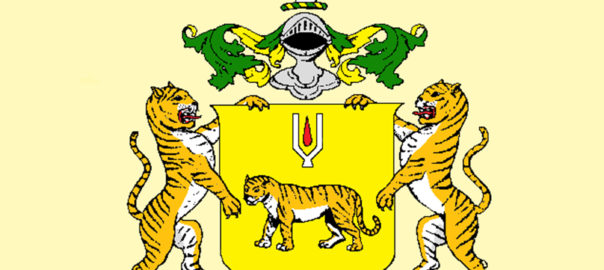

Prior to Independence, hundreds of Princely State existed in India which was not directly governed by the British, but rather by an Indian ruler under a form of an indirect administrator! British had their own monetary system but at least 125 states produced their own coinage, mainly in the period from 1800 to 1900, though the number of them continued to issue coins until 1947. Today, we will discuss and explore the history of the coinage of Rewa Princely State.
The Princely State of Rewa, also known as Rewah, is located in the heart of India, today in Madhya Pradesh. This state was founded in 1140 AD and came under British protection in 1812 AD. The royal family of this kingdom belonged to the Baghela clan of the Solanki clan who probably migrated from Anhilwara Patan in Gujarat.
The coinage of Rewa Princely state is an important par oft Indian numismatics. In the early 19th century, copper coins were known as the Bagga shahi which were struck at Rewa mint. 56 bagga shahi coins were equal to one British rupee.
Jai Singh Deo
Jai Singh Deo ruled the Rewa state from 1809 to 1835 AD. In 1812 he was coerced into a treaty with the British and failing to observe its conditions, was forced to yield British control in 1813-1814.
He struck copper coins in the denomination of Paisa. His coins bore the date in Persian or Devanagai Numeral on its obverse face of a coin.The reverse depicts the legend ‘Zarb Rewa’ in Persian inscription.
Vishvanath Singh
Vishvanath Singh ruled the Rewa state from 1835 AD to 1843 AD. He issued gold and copper coins in the denomination of Paisa and Mohur. The coins Vishvanath have legend ‘Sikka Rewa, Jado Vishvanath Singh’ inscribed Devanagari script. The legend on the reverse side of a coin was ‘Sree Rama Adikaree’ in English Roman legend.
Raghuraj Singh
Raghuraj Singh ruled the state for almost 37 years from 1843 to 1880 AD. He helped the British put down the uprisings in the neighbouring Mandla and Jabalpur districts in the mutiny of 1857. For this service, the Sohagpur (Shahdol) and Amarkantak parganas were restored to his rule (having been seized by the Marathas in the beginning of the century).
He struck copper coins during the reign in the denomination of Paisa and 2 Paisa. These coins represents the Lion facing left with tail raised upright and VS date on its obverse face. The reverse of a coin featured the text ‘Agent Bushby Saheb’ in Roman.
Maharaja Gulab Singh
During the Period of Maharaja Gulab Singh, he declared Hindi as a national language of Rewa state. He also credited for declaring the first responsible government in modern India, providing citizens of Rewa state a right to question their monarch’s decisions.
He issued gold and silver coins from Rewa mint. These coins were found in the denomination of Mohur and Rupee. It depicts coat of arms with small lion supporters, large Katar below, Devanagar legend below. The reverse of a coin inscribe with VS date in the inner circle, Sidhi Maharaja Gulab Singhji Bahadur Rewa in Devanagari around.
We hope this blog is able to cover all the aspects of Coinage of Rewa Princely State. Keep in touch and wait for some more interesting blogs on the Indian Princely States.
The Mintage World Team comprises of experts, researchers and writers from the field of Philately, Notaphily and Numismatics who try to shed light on some of the most interesting aspects of coins, banknotes and stamps from not just India but across the globe as well.